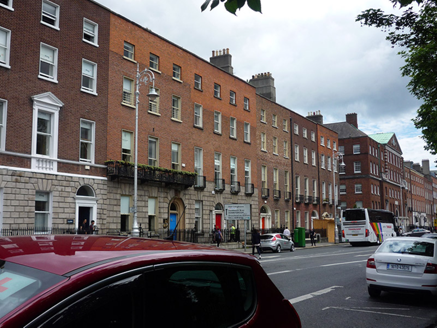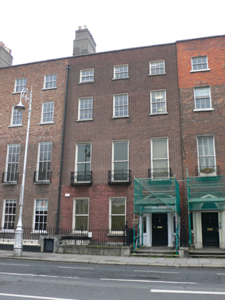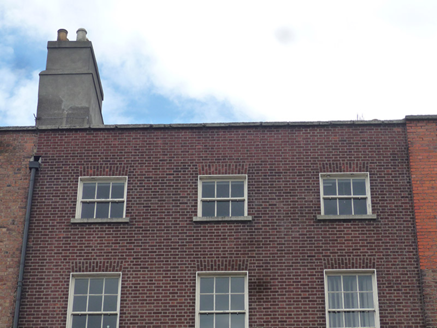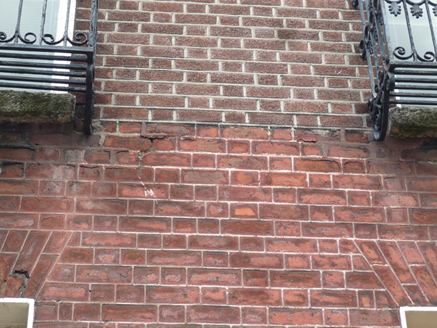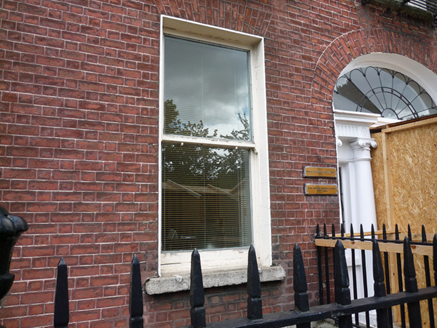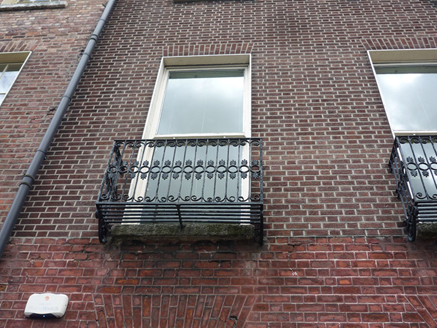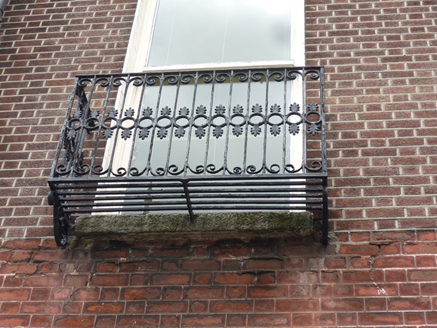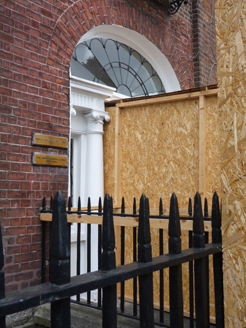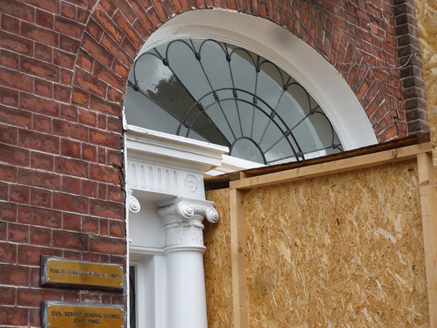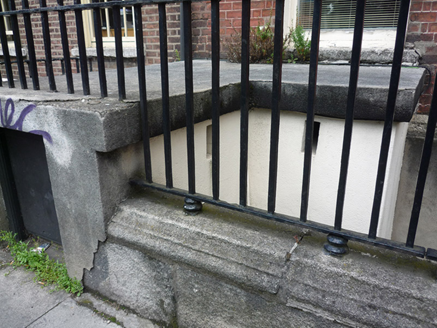Survey Data
Reg No
50100377
Rating
Regional
Categories of Special Interest
Architectural, Artistic
Original Use
House
Historical Use
Embassy
In Use As
Office
Date
1760 - 1800
Coordinates
316821, 233596
Date Recorded
29/07/2016
Date Updated
--/--/--
Description
Attached three-bay four-storey former house over basement, built c. 1780, having shared two-stage rear return. Now in office use and currently under renovation. Natural slate roof, pitched to front part, behind reconstructed brown brick parapet having masonry coping, rear part has pitched roof to east shared with No. 31 and hipped roof to west, with painted rendered parapet. Shouldered rendered chimneystacks to west party wall with terracotta pots. Concealed gutters and replacement uPVC downpipes. Flemish bond brown brick walling, refaced above first floor sill level, having original colour-washed wig-pointed brickwork to ground floor on splayed granite plinth over partially painted rendered basement walling. Painted rendered walling to rear. Square-headed window openings, diminishing in height to upper floors, with painted rendered reveals, painted granite sills and timber sliding sash windows, one-over-one pane with horns to ground and first floors, six-over-six pane to second floor, three-over-three pane to top floor, basement openings blocked; generally six-over-six pane to rear. Decorative wrought-iron balconettes with cast-iron in-fills to first floor. Elliptical-headed door opening having tripartite painted masonry doorcase comprising engaged Adamesque Ionic columns with respond quarter-pilasters, stepped entablature with fluted and rosetted frieze, leaded petal fanlight and sidelights, and eight-panel timber door with weatherboard and brass furniture. Door opens onto concrete platform bridging basement with two steps to street level. Basement enclosed by wrought-iron railings with decorative wrought and cast-iron corner posts on moulded granite plinth. Separate entrance gate no longer in use and original stairs to basement removed. Basement to west end enclosed by concrete air raid shelter of c. 1940 with flat roof. Timber-sheeted door accesses interior below bridged platform. Casey (2005) notes survival of early joinery and plaster detailing. Rear of plot has carparking and boundary is mainly brick wall with segmental-arch vehicular entrance.
Appraisal
No. 30 Merrion Square was built by John Ensor, as part of a row developed by John and George Ensor. Nos. 29-30 have tripartite elliptical-headed doorcases enlivening the otherwise restrained facades. Although the facade of No. 30 has been largely refaced, the overall character is retained. The air raid shelter to the basement is a relic of its former use as part of the British Embassy. The building, along with neighbouring houses, makes a strong contribution to the early character and architectural significance of Merrion Square. It was built as part of the original development of the Georgian square. Laid out as part of the Fitzwilliam Estate, Merrion Square is one of the best-preserved Georgian streetscapes in Ireland. The north, east and south sides of the square are lined with terraced houses of eighteenth and nineteenth-century date, while the west side is terminated by the garden front of Leinster House. The houses maintain a relatively uniform building height and design, attributed to standards promoted in Fitzwilliam's leases. Individuality was introduced through the design of doorcases, ironwork and interior decorative schemes.
